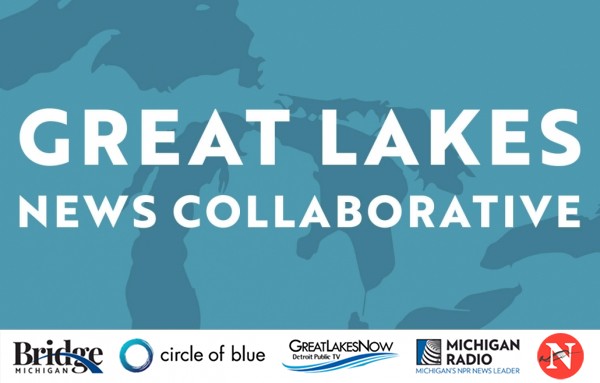Fresh, October 15, 2024: Wisconsin Ranks Second In Nation for Dam Failures, with Concerning Future Trend
October 15, 2024
Fresh is a biweekly newsletter from Circle of Blue that unpacks the biggest international, state, and local policy news stories facing the Great Lakes region today. Sign up for Fresh: A Great Lakes Policy Briefing, straight to your inbox, every other Tuesday.
— Christian Thorsberg, Interim Fresh Editor
This Week’s Watersheds
- Milwaukee’s South Shore beach, which for years has been one of the country’s most polluted swimming areas, is being moved south.
- In all five Great Lakes, NOAA researchers are measuring water quality by analyzing the tissue samples of invasive zebra and quagga mussels.
- After Wisconsin’s wettest decade on record, the state ranks second in the nation in dam failures, according to a new report.
- The successful completion of eight restoration projects in Lake Ontario has led to the Rochester Embayment’s removal from the EPA’s “areas of concern” list.
On a recent trip to Wisconsin, President Biden announced a new national deadline for lead service line replacements.
“There’s no safe, no safe level of lead exposure. Period. None. And the only way forward is to replace every lead pipeline and connect the American people to clean water.” — President Joe Biden, to a crowd of union laborers at Milwaukee’s Public Works Field Office.
Last week, President Joe Biden traveled to Wisconsin to announce new funding — and a new federal deadline — for the replacement of lead service lines, Wisconsin Public Radio (WPR) reports. Local Wisconsin governments will have by 2037 to remove existing lead lines. Paired with the replacement mandate, the president announced $2.6 billion in federal funding to aid the effort. Of that, Wisconsin will receive $43 million.
Both the EPA and Center for Disease Control and Prevention “say there is no safe amount of lead in drinking water,” WPR reports. And in August, Wisconsin Gov. Tony Evers announced a $4 million grant program to educate residents and community leaders about the importance of lead service line removals.
Milwaukee has the state’s largest concentration of lead lines — since 2017, just 8,000 of 73,000 have been replaced. This year, 2,400 pipes are slated to be replaced, and the goal for 2025 is 3,500.
Fresh from the Great Lakes News Collaborative
- A decade after Flint, feds require nationwide lead pipe removal — Bridge Michigan
- PFAS Roundup: Over $3M awarded to MSU scientists to address PFAS in agriculture, Wisconsin tackles PFAS during hunting season — Great Lakes Now
- Consequences of less ice on lakes due to climate change — Michigan Public
- Have you considered the Canada Goose? — The Narwhal
Bridge Michigan, Circle of Blue, Great Lakes Now at Detroit Public Television, Michigan Public and The Narwhal work together to report on the most pressing threats to the Great Lakes region’s water. This independent journalism is supported by the Charles Stewart Mott Foundation. Find all the work here.
In Wisconsin, 34 Dam Failures This Century Earn State Undesired Ranking In New Report
From 2000 through the end of 2023, Wisconsin experienced 34 dam failures — second only to South Carolina in that time, according to a new report from Wisconsin Policy Forum.
But what concerns officials even more than these pure numbers is the trends they are seeing. Of the 34 failures, 28 have occurred since 2018, and 18 of these were within just the past four years. Since 1950, rainfall in the state has increased by 17 percent, with 2010 to 2019 being its wettest decade on record.
Erratic, extreme precipitation events — such as the 500-year flood earlier this year, in which southern Minnesota’s Rapidan Dam partially collapsed — are becoming more commonplace as a result of a changed climate.
Meanwhile, as precipitation increases, the state’s dams aren’t getting any younger. The average age of a dam in the United States is roughly 60 years old, compared to the 80 year-old average age of those in Wisconsin.
Of the state’s more than 4,000 dams, 206 dams have been identified as having the potential to “cause the most damage to people living downstream in the event they failed,” Wisconsin Public Radio (WPR) reports. This number has increased, from 177, over the past 30 years.
Local governments in Wisconsin are responsible for 48 percent of the state’s dams considered to be “high hazard.” And yet, until recently, dam safety funding has remained nearly unchanged for more than a decade. According to WPR: “Since 2009, the Wisconsin Department of Natural Resources has received $4 million to help local governments maintain their dams.”
Gov. Tony Evers increased funding to $10 million from 2021 to 2023, but it was reduced again to $4 million beginning in 2024.
In the News
Rochester Embayment: Following a $14 million investment funded by the Great Lakes Restoration Initiative, the 35 square-mile bay on Lake Ontario’s southern shore has been removed from the EPA’s “areas of concern” list, meaning it is no longer one of the country’s “most environmentally degraded” water bodies. Eight ecosystem improvement projects in the greater Rochester, New York, area have together restored 275 acres of habitat and 30,000 linear feet of wetland channeling, Spectrum News 1 reports.
Invasive Mussel Allies: Zebra and quagga mussels, which are both non-native species in the Great Lakes, are serving as unlikely allies for NOAA scientists who are interested in monitoring the region’s water quality, the Great Lakes Echo reports. As part of the federal agency’s Mussel Watch program, researchers are collecting mussels at more than 50 locations throughout all five Great Lakes and studying their tissues. “As mussels filter water, they collect pollutants such as heavy metals and per- and polyfluoroalkyl substances or PFAS” in their bodies. Nearly 600 distinct contaminants have been found so far.
In Context: Harnessing Mussels to Filter Fresh Water
Looking Ahead
After decades of effort, Milwaukee’s South Shore beach — “one of the most degraded sites in the Great Lakes region,” according to the Milwaukee Journal Sentinel — is finally being moved farther south along the Lake Michigan coast, thanks to $8 million in federal funding. Often closed throughout the summer due to high levels of E. coli, South Shore often ranks near the bottom of nationwide beach water quality reports. Researchers have found that gulls and other seabirds tend to congregate at a nearby boat ramp, and their excrement is washed into the beach whenever it rains. A lack of water flow means the bacteria concentrate in South Shore without being washed away. The new beach, whose construction is funded through the Great Lakes Restoration Initiative, will offer improved water flow and dune grass to deter birds, while the former swimming area will be converted into a “naturalized green space.”
Upcoming Events
October 22 — State of the Strait Conference on Cross-Border Trail Tourism — learn more
October 23 — Great Lakes Seminar Series: The Science and Art of Collaborative Flood Forecasting: Rivers, Lakes and their Expert-Inhabitants — learn more
November 5-8 — North American Lake Management Society 2024 Annual Symposium — learn more
Other News
Lake Erie Phosphorus Reduction: The EPA is making $4 million available to local and state agencies, universities, and federally recognized tribes “to support phosphorus-reduction outreach and technical assistance” in the western Lake Erie basin, the Toledo Blade reports.
Illinois Beach State Park: The $73 million shoreline preservation project — meant to help protect the “rapidly eroding” Lake Michigan shoreline, disappearing at 100 feet per year in northern Illinois — has been completed, the Lake and McHenry County Scanner reports.
Christian Thorsberg is an environmental writer from Chicago. He is passionate about climate and cultural phenomena that often appear slow or invisible, and he examines these themes in his journalism, poetry, and fiction.









Leave a Reply
Want to join the discussion?Feel free to contribute!